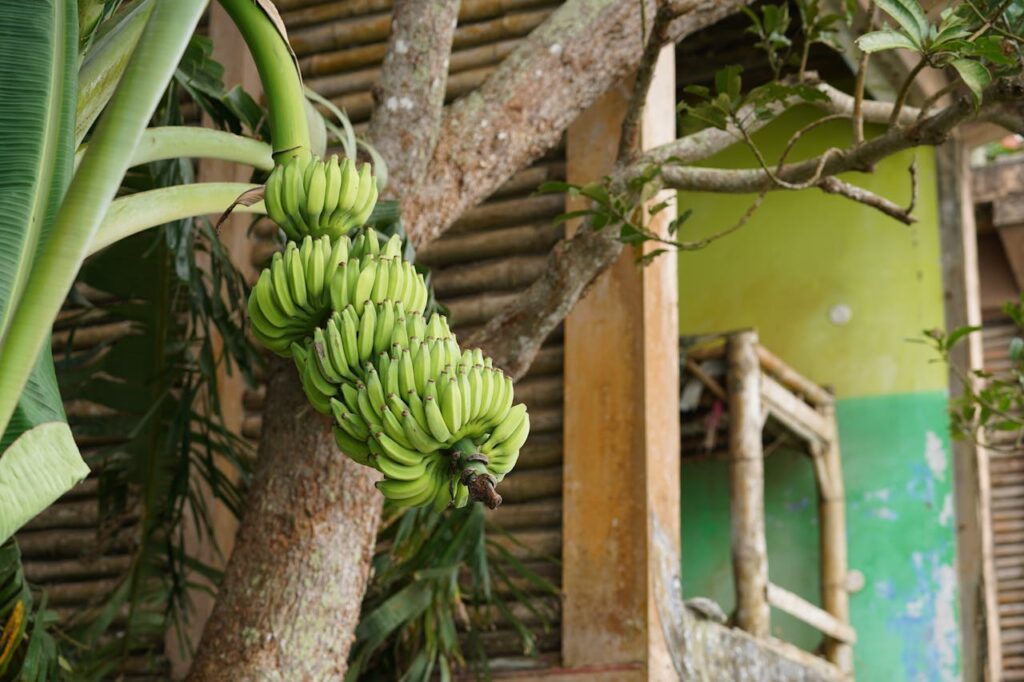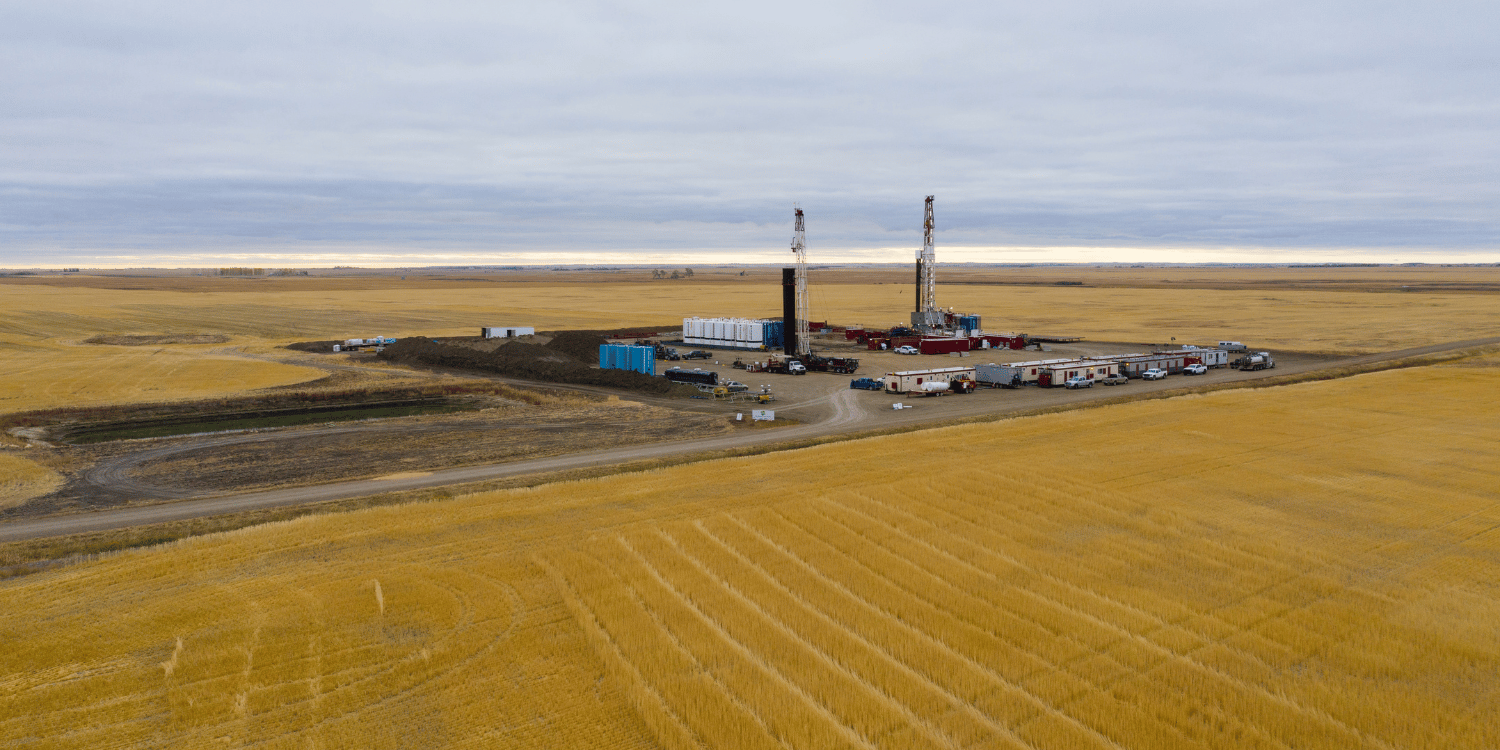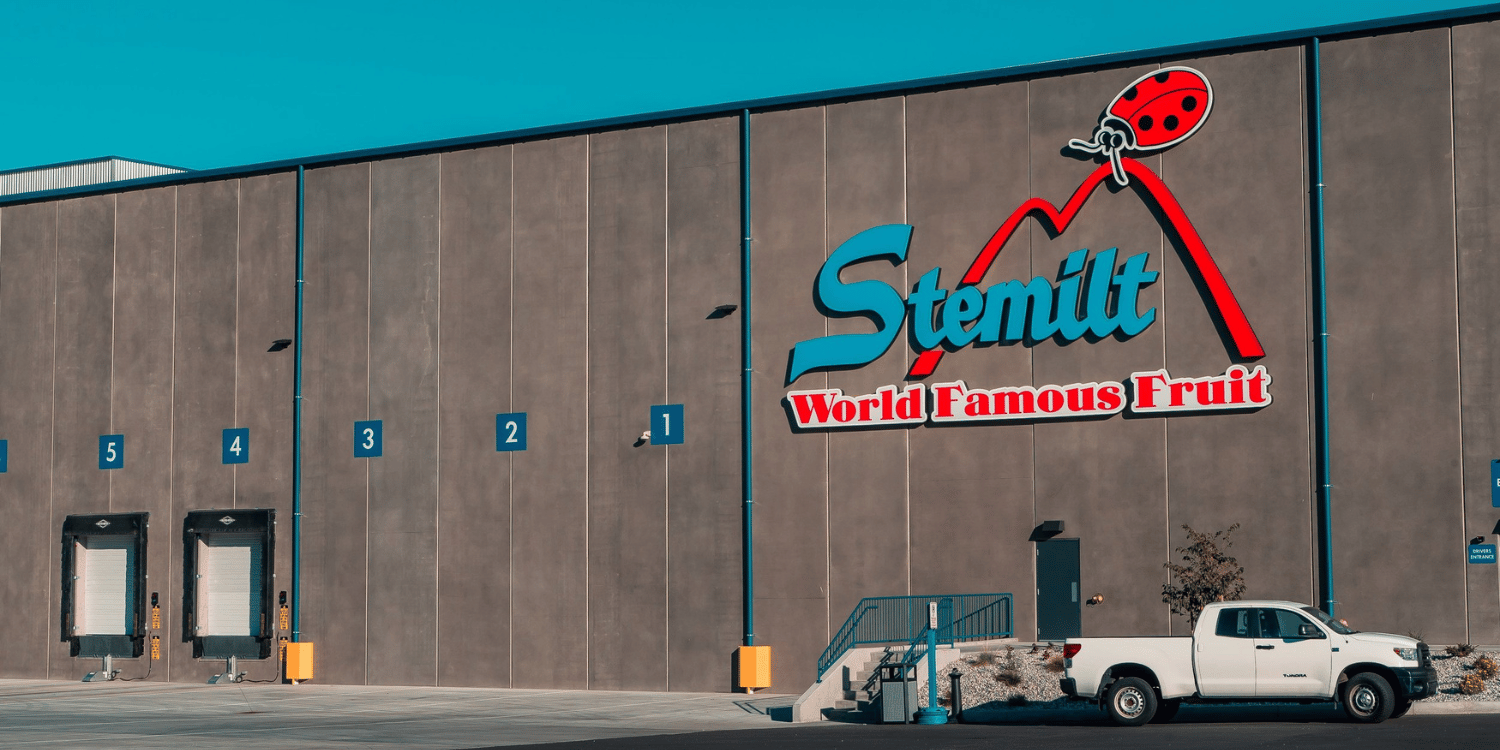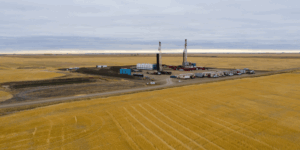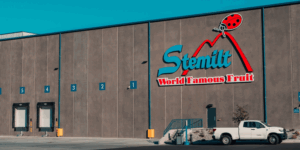Sustainable banana farming integrates various ecologically-friendly practices that make a significant difference.
Firstly, it involves efficient water management to prevent wastage and pollution.
Secondly, organic farming bans the use of harmful pesticides and instead promotes the use of natural pest deterrents.
Thirdly, mulching and intercropping are essential in this practice to improve soil fertility and encourage biodiversity.
Fourthly, sustainable farmers focus on preserving their genetic diversity by planting a mix of banana varieties.
Lastly, they practice responsible waste management by composting organic waste, further contributing to soil health and reducing landfill waste.
- Sustainable banana farming is critical for environment preservation.
- Water management ensures optimal growth and prevents resource wastage.
- Organic farming promotes sustainable practices and enhances soil health.
- Mulching improves soil fertility, benefiting overall banana production.
- Intercropping and genetic diversity preservation are vital for maintaining biodiversity.
In addition to these key practices, there are still many other factors at play in the realm of sustainable banana farming.
The next sections will explore such topics, including discussions on pest and disease management, the economic feasibility of transitioning to sustainable methods, and the role of fair-trade certification in promoting better practices.
By understanding these comprehensive issues, we can start to recognize the bigger picture of sustainable banana farming and its significant role in protecting our planet.
I encourage you to continue exploring the content, as it provides a more extensive understanding of the topic, with the promise of explaining concepts in simple and accessible language.
Contents
- What is Sustainable Banana Farming?
- Why is Water Management Important?
- Role of Organic Farming in Sustainability?
- How does Mulching Improve Soil Fertility?
- Importance of Intercropping in Biodiversity
- Why Preserve Genetic Diversity in Bananas?
- Effects of Pesticides on Banana Farming
- Responsibility of Waste Management
- The Bottom Line
What is Sustainable Banana Farming?
In Short: Sustainable banana farming is an environmentally conscious approach that combines limiting pesticide use, promoting biodiversity, using organic fertilizers, and efficient water management, ultimately seeking a balance between productivity and preservation. Additionally, it encompasses social and economic factors, advocating for fair wages, safe working conditions, and minimal adverse impact on local communities.
The increasing need to protect the planet has brought about the introduction of sustainable farming practices in agriculture. Among these sectors, the banana farming industry is one that has taken significant strides towards sustainability.
Sustainable banana farming is an environmental approach that focuses on the preservation of the ecosystem for future generations. Yet, what does this entail in real terms?
It involves strategies that limit the use of harmful pesticides, and it is much more. It is the practice of maintaining and improving agricultural productivity while preserving the environment. How is it achieved?, you may ask.
Here’s where sustainable practices come into play. Let’s take a look at some of these practices and the impact they have:
- Forest Conservation: This involves planting trees around banana plantations to promote biodiversity and improve the overall health of the environment.
- Organic Fertilizers: Using organic fertilizers instead of synthetic fertilizers reduces the runoff of harmful chemicals into nearby bodies of water.
- Water Management: Implementing efficient irrigation systems to minimize water use plays an essential role in sustainable banana farming.
But sustainable banana farming does not stop at environmental impact alone.
It also includes social and economic factors. Have you considered the socio-economic impact of your banana consumption?
The sustainable approach ensures that banana farmers receive proper wages, work in safe conditions, and that the local community is not negatively impacted by the farming. It focuses on maintaining balance.
Fair trade certification is one way to ensure this. But it’s important to remember that not all sustainable banana farms necessarily carry that certification.
Why should we continue to support these practices? It’s simple.
Sustainable banana farming ensures that we continue to enjoy our beloved bananas without causing harm to the planet or taking advantage of producers.
The switch to sustainable farming may not be easy, but it is necessary for our future.
Isn’t it fascinating how much more there is to our everyday banana?
Eventually, the goal of sustainable banana farming is to create a balance between production and preservation. This not only ensures that bananas remain a viable crop, but also promotes a future where we can continue to enjoy these fruits without causing environmental degradation.
Though, achieving this balance may not be straightforward, it’s worth striving for, isn’t it?
Why is Water Management Important?
In Short: Effective water management plays a critical role in ensuring healthy, sustainable banana farming by optimizing growth, maintaining soil fertility, controlling pests, and conserving resources. Such practices can also help mitigate the impacts of climate change and variable weather conditions on crop yield.
Understanding water management is instrumental in sustaining our global food system, particularly in agriculture. More specifically, in banana farming where it plays a significant role.
The effective use, conservation, and management of water is the most important point of growing healthy, sustainable bananas.
Ask yourself, why? Simply put, water is the essential lifeblood of any crop.
Bananas, in particular, are water-intensive plants and thus, how we manage this precious resource directly impacts their growth and yield.
Beyond that, proper water management practices also go a long way in minimizing the adverse effects of unpredictable weather patterns on banana crops, wouldn’t you agree?
Think about the catastrophic effects of a prolonged drought or flooding on a banana farm. Effective water management comes in handy to mitigate such threats.
It’s also worth noting that sustainable water management conserves our freshwater resources, ensuring that future generations will not grapple with scarcity.
Importantly, let’s take a deeper look into how water management impacts key areas of banana farming:
- Plant Growth and Yield: Bananas require consistent, adequate watering for their growth and productivity. Water stress can harm crop development and reduce output.
- Soil Fertility: Appropriate irrigation can help maintain soil structure and nutrient content, leading to healthier crops and higher yields.
- Pest Control: Regulating water usage can help control pests and diseases, which could devastate banana crops if left unchecked.
- Resource Conservation: Efficient irrigation systems reduce water wastage, hence conserving this important resource for future use.
Indeed, climate change greatly affects water resource availability making effective water management an even more important aspect in farming.
How do we tackle this? Ironically, it begins with the right water management techniques.
Recognizing these impacts, aren’t we then compelled to prioritize smart water usage and conservation practices in our banana farms? Not only will this protect our crops, but also preserve invaluable water resources.
Banana farming indeed stands to gain enormously from efficient water management. This doesn’t only yield healthy crops but also offers a means for farmers to adapt to climate change, wouldn’t you argue?
Imagine the massive transformation we’d witness in banana farming across the globe, with better water management.
Conclusively, a sustainable banana farm is a water-efficient farm. That’s a key understanding, isn’t it?
Role of Organic Farming in Sustainability?
In Short: Organic farming, which avoids synthetic fertilizers and genetically modified organisms, promotes ecological balance and conserves biodiversity, making it crucial for sustainability. Its practices reduce soil erosion, water pollution, and greenhouse emissions while encouraging a healthier wildlife population, making it vital in the fight against global warming and the promotion of sustainable ecosystems.
The process of cultivating our earth’s resources has a tremendous impact not only on the quality of the food we consume but on the overall health of our surroundings. Isn’t it a concerning narrative that needs changing?
Organic farming, a practice increasingly embraced globally, significantly contributes to this desired change. How exactly does it do that?
In essence, organic farming hinges on techniques that promote ecological balance and foster the conservation of biodiversity. Most importantly, it eschews the use of synthetic fertilizers, pesticides, and genetically modified organisms.
Impressively, this method of farming aids in building soil health by utilizing natural processes that enhance fertility. This is implemented by increased use of organic materials and beneficial microorganisms.
Isn’t utilizing nature’s own tool kit incredible?
The following are some critical ways in which organic farming practices promote sustainability:
- Decreasing Soil Erosion: Sustainable farming methods such as crop rotation and cover cropping help in maintaining soil structure and nutrient content, thus preventing soil erosion.
- Supporting Water Conservation and Clean Water: By eliminating the use of chemical pesticides and fertilizers, organic farming reduces water pollution. Moreover, it increases water holding capacity of soil, contributing to water conservation.
- Reducing Greenhouse Emissions: Organic farming practices like composting, green manuring, and using animal manures help sequester carbon in the soil, significantly reducing greenhouse emissions.
Moreover, it’s a no-brainer that any practice that reduces the need for chemicals encourages a healthier population of wildlife. When farming methods become a sanctuary for biodiversity, it creates a more stable, balanced environment.
Do you realize how well nature takes care of itself when allowed?
Organic farming has a more significant role beyond merely being a food production method. It is a holistic approach, a tool to mitigate the impact of global warming, by increasing soil’s ability to hold carbon.
But are we, as a society, ready to embrace this change?
The global shift to embrace organic methods represents a paradigm shift in our attitudes and a call to take better care of our environment. Organic farming does not merely mean reducing the use of synthetic chemicals; it is about fostering ecosystems that are sustainable and self-contained.
Isn’t it encouraging how understanding and compassion toward our environment can result in such positive changes?
The need now is not just to increase the number of organic farmers, but also to increase the number of consumers who appreciate the value of organic products. This will encourage and justify the effort behind the growth of these crops.
It’s clear that organic farming has incredible potential for sustainable agriculture. Can you grasp the importance of each individual’s role in this transformative shift?
How does Mulching Improve Soil Fertility?
In Short: Mulching enriches soil fertility by preserving moisture, controlling temperature, replenishing nutrients, and reducing erosion. Regular application of mulch creates a healthy environment that enhances soil health, contributing to sustainable banana farming.
Mulching, a simple yet transformative farming practice, can play a considerable role in sustainable banana farming. Sure, you may wonder, how?
Well, mulching works wonders primarily by improving soil fertility. It does so by enriching the soil with necessary nutrients that not only boost plant health but also improve yield. It’s a win-win, isn’t it?
In the grand scheme of things, the question isn’t whether mulching helps. It’s about how exactly it enriches our friendly earth, making it more fruitful.
Understand this: Mulch is not a one-trick pony. It improves soil fertility in multiple ways. Here are a few key ones:
- Preserving soil moisture: Mulch works fantastic at retaining soil moisture by reducing evaporation.
- Moderating soil temperature: It controls the soil temperature, ensuring it remains optimal for plant growth.
- Replenishing Soil Nutrients: As organic mulch decomposes, it slowly releases nutrients back into the soil, naturally enriching it.
- Reducing erosion and compaction: In addition, mulch safeguards soil from wind and water erosion while preventing soil compaction due to heavy rainfall or irrigation.
All these benefits combine, resulting in quite healthier, more fertile soil, which in turn becomes a stumbling block for weeds and pests, doesn’t it?
Keep in mind, each piece of mulch contributes to soil structure. It provides the perfect habitat for earthworms and other beneficial soil organisms.
Burrowing through the earth, these creatures help aerate the soil, making it better suited for plant roots. Organic matter from decomposing mulch can also increase the soil’s ability to hold water, improving vegetation survival rates during dry spells.
Mulch, when rightly applied, not only influences the soil composition but also, and importantly, complements the activities of existing soil organisms in the ecosystem. It’s a perfect relationship, wouldn’t you agree?
Let me tell you, while mulch itself doesn’t necessarily improve the soil, it creates an environment that enhances the soil’s health.
Compare this to a gym, with the right equipment, atmosphere, and diet, your efforts start yielding better results, faster. Mulching’s just the right tool for the soil.
It’s important to remember, however, that successful mulching in banana farming doesn’t happen overnight; it’s a sustained practice.
Applying mulch to your banana trees regularly, whether annually or semi-annually, can maintain or even improve the fertility of your soil over the years. Somewhat like a bountiful gift that keeps on giving, wouldn’t you say?
Importance of Intercropping in Biodiversity
In Short: Intercropping boosts biodiversity in banana farming, promoting healthy soil, better pest control, and environmental resilience, and lessening reliance on synthetic fertilizers and irrigation. This practice aids in efficient resource usage, increases overall crop yield, and plays a crucial role in carbon absorption, making it instrumental for sustainable farming and climate change mitigation.
What happens when we decide to breed monocultures instead of diverse plants in farming banana farms? Are we not diminishing the very lifeline that makes our ecosystem thrive and natural nutritious cycles efficient?
Intercropping comes in as an efficient practice that both benefits the farmer and boosts biodiversity. But, why exactly is biodiversity critical in sustainable farming?
Well, biodiversity promotes healthy soil by facilitating natural nutrient cycling. This helps banana crop yield and quality. Biodiversity also decreases our reliance on synthetic, non-organic fertilizers.
Intercropping aids in the retention of water in soil. This mitigates the effect of drought periods and lessens the dependence on irrigation systems. Isn’t it appealing to increase harvest success and decrease resources spent?
Before delving deeper into how intercropping nurtures biodiversity, here’s a quick list of the key benefits of biodiversity in banana farms:
- Healthy Soil: A diverse range of species in the soil encourages natural nitrogen fixation, and restricts soil-borne disease spread.
- Pest Control: Diverse plants attract various beneficial insects or natural predators of pests, reducing the need for chemical pesticides.
- Resilience: Biodiversity ensures the farming ecosystem can quickly bounce back from environmental stressors like climate changes or disease outbreaks.
Intercropping stands as a critical practice that fosters biodiversity in crop fields. By growing a variety of plants together, rather than a single crop, we invite a varied set of organisms into the ecosystem.
Are insects only harmful pests to our crops? Here’s a common misconception. We need some insects to aid in the necessary pollination of our plants.
Diverse plants not only attract these beneficial insects but also ward off destructive pests. Moreover, different root systems from mixed crops often lead to more effective resource usage of water and nutrients in the soil. Combined, these actions tend to increase overall crop yield and sustainability.
The rationale behind intercropping and its promotion of biodiversity stretches beyond just the farmer’s field. Biodiversity has been linked to significant climate change mitigation processes. Plants absorb carbon dioxide, a major greenhouse gas.
Thus, having more plant diversity means more efficient absorption of carbon dioxide. Diverse ecosystems also tend to be more resilient to changes in climate. How can we argue against practices that naturally mitigate the weighty issue of climate change?
Undeniably, the practice of intercropping enriches biodiversity and fosters sustainable farming. As we seek sustainable methods of farming, we uncover practices built on the strength of nature’s own mechanisms. Is it not amazing how nature has had the solutions all along?
Why Preserve Genetic Diversity in Bananas?
In Short: Preserving genetic diversity in bananas is crucial for sustainable farming as it provides resilience against diseases, pests, and changing climates. Additionally, it allows for the development of new, disease-resistant varieties and the potential for nutrient enhancement.
Let’s start with a basic understanding. Bananas, our much-loved fruit, have considerable genetic diversity that plays a crucial role in sustainable banana farming.
You may ask, why should we bother? Isn’t a banana just a banana? The answer is far from that.
Genetic diversity in bananas is the natural safety net for the species. It ensures that bananas, as we know them, continue to exist and thrive in differing environmental conditions.
It provides resilience against diseases, pests and changing climates. Isn’t it amazing how complex and valuable the humble banana is?
Bananas are susceptible to a plethora of diseases and pests. If all bananas have the same genetic makeup, a disease that afflicts one could potentially wipe out entire plantations.
That’s where genetic diversity comes into play. Simply put, the more genetically diverse, the more resistant bananas are to threats. Let’s take a look at a few examples of such threats:
- Fusarium Wilt is a soil-borne fungus that has wiped out entire banana plantations in the past.
- Black Sigatoka, a leaf spot disease, can decimate banana yields by up to 50%.
- Bananas also face threats from pests such as the banana weevil, and races of Panama disease.
Can you imagine your life sans bananas due to a single disease or pest?
Not a pleasing thought, is it? Therefore, preserving the genetic diversity in bananas is the key to the sustainability of banana farming.
Another interesting aspect worth diving into is the fact that bananas are asexually reproduced. This means every banana tree is genetically identical to the one it originated from.
Thus, all bananas of a specific variety, say Cavendish, are genetic duplicates of each other. This makes them highly susceptible to pests and diseases.
Preserving and expanding the genetic diversity in bananas can lead to the development of new, disease-resistant varieties. Isn’t it exciting thinking of all the unexplored potentials in our favorite fruit?
Genetic diversity also offers a chance to broaden the pool of nutrients available. Bananas could be bred to provide more vitamins, minerals, and other important nutrients.
So now we understand that behind the simple and elegant beauty of a banana is a complex and diverse genetic architecture. It works diligently to ensure bananas continue to thrive and nourish us.
Realizing the immense importance of preserving this genetic diversity is a step forward in the road to sustainable banana farming. Let’s appreciate the nuances and move ahead with our quest for sustainable practices, shall we?
Effects of Pesticides on Banana Farming
In Short: Pesticides in banana farming can have detrimental effects on farmers’ health, the environment, and the quality of the fruits. A shift towards sustainable practices could mitigate these harmful impacts, improving farmer welfare, environmental sustainability, and fruit quality.
Are you aware of the crucial role that pesticides play in banana farming? Their application often seems like the only solution to protect crops from pests and diseases.
But have we ever considered the harmful effects they could have? Getting deep into the effects of pesticides can shed light on this issue.
The first and foremost effect of pesticides is on the health of farmers. In most cases, farmers handling these chemicals are not fully aware of their potential damage.
High exposure to such substances can lead to serious health issues. These issues are as serious as cancer or chronic diseases, like respiratory problems.
What about the environment? Pesticides, especially the non-biodegradable kind, disrupt the harmony of the ecosystem.
Overflowing into rivers and bodies of water, these substances can be fatal to aquatic life. When they seep into the ground, they contaminate groundwater, making it unsafe for consumption.
Another problem – the impact of these chemicals on soil health. The high toxicity of pesticides often kills beneficial soil microorganisms which are important for fertile soil.
Does this mean that pesticides solely harm the farming ecosystem? Are all beneficial organisms in the soil destroyed?
The sad truth is, pesticides leave a devastating impact on the population of these little helpers. Not to mention their effect on pollinators like bees and butterflies, which are essential for crop reproduction.
Now, let me list a few more notable effects of pesticides on banana farming. Don’t overlook the gravity of these issues as they play a significant role in the overall farming process.
- Pest Resistance: Pests can develop resistance over time, making them immune to the pesticides.
- Quality degradation: The residue of pesticides can lead to a degradation in quality of the fruits.
- Cost: Investing in pesticides is an additional cost for farmers, hitting their profit margins.
Reading this, one might wonder, are pesticides evil incarnate? Don’t get me wrong. Pesticides do play a role in increasing productivity by combating pests.
But one cannot ignore the truth about their harmful effects. It’s high time to focus on sustainable practices that minimize the use of these chemicals.
Considering the effects of pesticides on farmers, the environment, and the fruit itself, it becomes crucial to learn about sustainable agricultural practices. Remind yourself why this is important tomorrow, when you bite into that bright, delicious banana.
Responsibility of Waste Management
In Short: Efficient waste management in banana farming is crucial for sustainability, leveraging waste as valuable resources such as compost, animal feed and mulch. It is an essential practice that can reduce costs, generate income, conserve resources and protect the environment.
When we talk about banana farming, we must understand the crucial aspect of efficient waste management. Sad as it may be, waste management often falls by the wayside on many farms.
Did you know that what’s considered “waste” from bananas, including the peels, stalks, and unwanted portions are actually quite rich in nutrients? In fact, unwanted banana plant parts can be turned into a multitude of valuable products.
We’ll discuss these practices as an approach to reduce waste and promote sustainable farming. These methods not only lower the environmental impact but can also augment farmers’ income and yield more sustainable farms.
Let me tell you, how exactly can this be implemented? Here are some of the waste management practices that could make a significant difference.
- Composting: Composting is one of the most resourceful ways to utilize organic waste. It allows the farmer to maintain soil fertility and crop productivity without heavily relying on synthetic fertilizers.
- Animal Feed: Banana wastes can be used as feed for livestock. For instance, they can be dried, milled, and mixed with other feeds to enhance nutritional content.
- Mulching: Excess plant material can be used to cover the soil surface, a practice known as mulching. This helps in reducing soil erosion and maintaining soil moisture.
Can the benefits of such practices be ignored? Certainly not. They are examples of circular economy strategies, where waste is considered a resource. It makes sense, doesn’t it?
Commonly, farmers burn or landfill banana waste due to the lack of waste disposal knowledge. This not only contributes to global warming but also occludes the many potential benefits that could be derived from this waste.
Understanding the role and potential of waste management in agriculture is important. Isn’t a sustainable farming technique the one that promotes plant growth, while also ensuring the wellbeing of the environment?
Sustainable waste management can reduce costs, generate income, conserve resources, and protect the environment. Shouldn’t farmers and others involved in the banana production line invest time and resources, to efficiently manage waste?
I believe the future of sustainable banana farming undoubtedly intertwines with efficient waste management. It’s a part of a broader debate on sustainability. Since it not only aids in avoiding waste but also in recycling valuable resources.
The role of waste management on banana farms isn’t just beneficial, it’s essential. And it’s something we should all strive to implement and improve.
The Bottom Line
Sustainable banana farming is a crucial endeavor, utilizing techniques including water management, organic farming, and soil enrichment tactics such as mulching.
Effective water management not only conserves this important resource but also increases the productivity and health of banana crops.
Incorporating organic farming practices plays a significant role in maintaining soil fertility and reducing environmental harm.
Mulching, in particular, is a valuable practice enhancing soil fertility, moisture retention, and binary protection against pests.
The practice of intercropping promotes biodiversity, providing a more resilient and productive farm ecosystem.
Preserving the genetic diversity of bananas is important as it aids in disease resistance and the overall survival of this crucial crop.
The detrimental aspects of pesticide usage—such as soil contamination and harm to non-target organisms—underscore the need for a more sustainable approach to pest management.
Finally, responsible waste management is an obligation for banana farms, aiming to reduce landfill waste and recycle as many materials as possible for the benefit of the environment.

